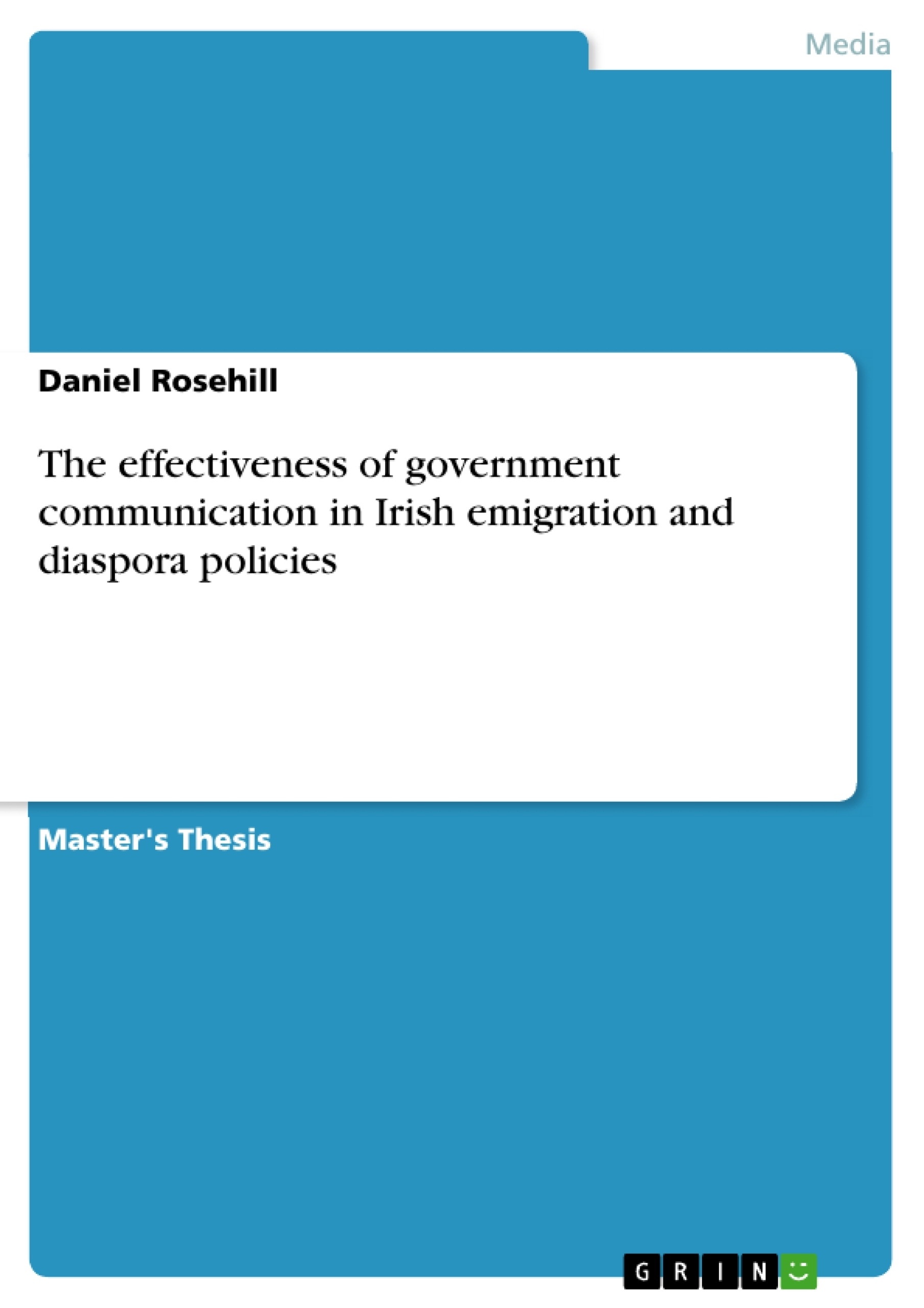Gross Irish emigration has reached the highest levels since the foundation of the modern State in recent years. In response to this, and increasing media coverage of the phenomenon, the Irish government has highlighted reversing this pattern and preventing youth emigration, as a major policy concern. Initiatives aimed towards preventing this problem through job creation and internship schemes have been formulated and communicated concurrently by both central government and various State agencies. A renewed government commitment to the Irish Diaspora has emerged as a closely related policy during the current Coalition’s tenure in office, aimed at encouraging tourism, investment, and re-migration of former emigrants. After documenting the rise of both these issues to the political agenda, this dissertation assesses the efficacy of communication by the Irish Government of policies designed towards achieving both these ends through survey findings and comparison of actual government practice to the international political communication and marketing research literatures.
Inhaltsverzeichnis (Table of Contents)
- CHAPTER ONE: INTRODUCTION
- Abstract
- Introduction
- Definitions
- CHAPTER TWO: EMIGRATION
- Modern crisis
- Background
- Political sentiment
- Programmes
- CHAPTER THREE: DIASPORA
- Policy background
- Rationale
- Programmes
- CHAPTER FOUR: LITERATURE
- Academic framework
- Literature Review
- CHAPTER FIVE: RESEARCH
- Research findings
- Citation du texte
- Daniel Rosehill (Auteur), 2013, The effectiveness of government communication in Irish emigration and diaspora policies, Munich, GRIN Verlag, https://www.grin.com/document/520000



